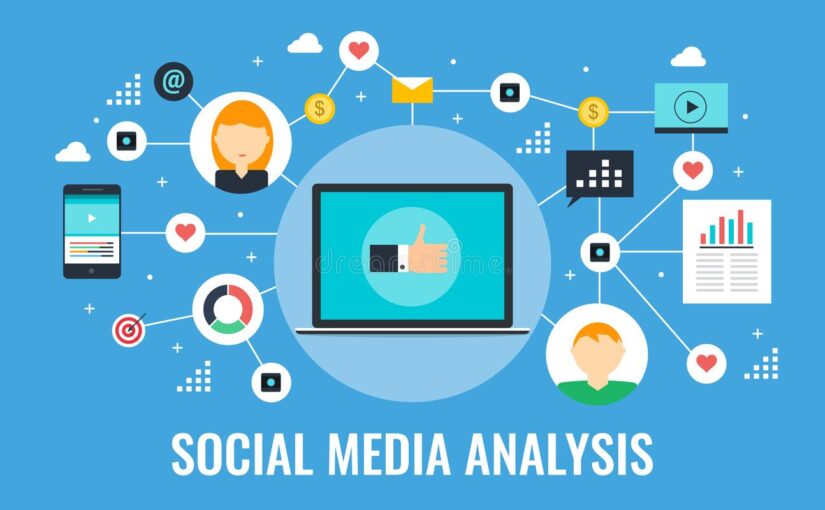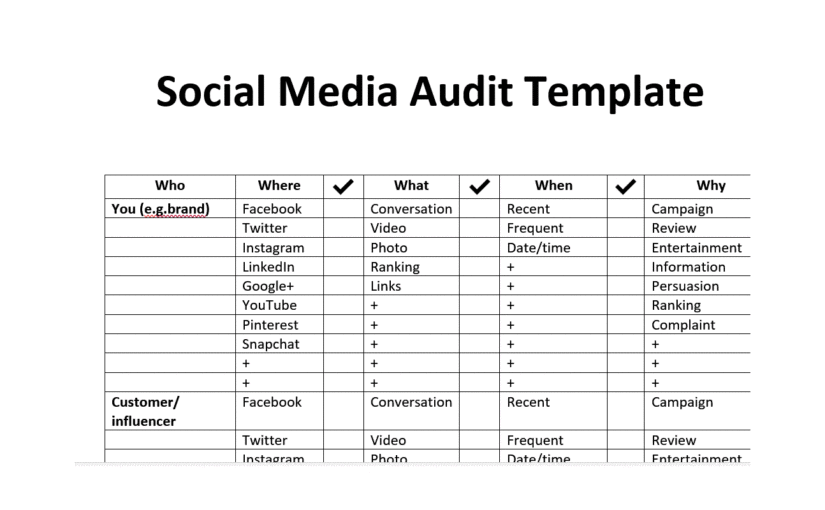Category: * All Marketing (Index)
-

Interactive Video Marketing
Engaging Audiences through Interactive Video Marketing Introduction: In the ever-evolving landscape of digital marketing, interactive video has emerged as a dynamic and immersive tool to captivate audiences. This lesson explores the essence of interactive video marketing, delving into its key components, benefits, and strategies that businesses can employ to create compelling and participatory experiences for…
-

Neuro-Marketing
Decoding Consumer Behavior: A Deep Dive into Neuro-Marketing Introduction: Neuro-marketing, at the intersection of neuroscience and marketing, delves into the intricate workings of the human brain to understand and influence consumer behavior. This lesson explores the fundamentals of neuro-marketing, the neurological processes that shape decision-making, and how businesses can leverage this knowledge to create more…
-

Gamification in Marketing
Gamification in Marketing: Strategies for Engaging and Retaining Audiences Introduction: Gamification has emerged as a powerful strategy in marketing, leveraging elements of game design to enhance customer engagement, foster brand loyalty, and drive business success. In this lesson, we will explore the concept of gamification, its key components, and how businesses can effectively integrate game-like…
-

Loyalty Programs
Loyalty Programs: Building Customer Connections and Enhancing Business Success Introduction: Loyalty programs have become a cornerstone of modern business strategies, fostering lasting connections between brands and their customers. These programs aim to incentivize repeat business, reward customer loyalty, and ultimately contribute to a company’s long-term success. In this lesson, we’ll delve into the significance of…
-

AI Chatbots for Marketing
Integrating Emotional Intelligence into AI Chatbots: A Comprehensive Lesson Introduction: As Artificial Intelligence (AI) continues to advance, the integration of emotional intelligence into AI chatbots has become a crucial area of development. Emotional intelligence enables machines to understand, interpret, and respond to human emotions effectively. In this lesson, we explore the significance of emotional intelligence…
-

Data Privacy Regulations:
Navigating Data Privacy Regulations: A Comprehensive Lesson Introduction: As technology continues to advance, the importance of safeguarding individuals’ personal information has become a critical concern. Data privacy regulations aim to protect the rights and privacy of individuals while ensuring responsible data handling by businesses. This lesson delves into the significance of data privacy regulations, the…
-

Diversity and Inclusivity in Marketing
Diversity and Inclusivity in Marketing: A Strategic Approach Introduction: In today’s dynamic marketplace, where consumers are more diverse than ever, recognizing and embracing diversity and inclusivity in marketing is not just an ethical choice but also a strategic imperative. This lesson explores the importance of diversity and inclusivity in marketing, examining how brands can authentically…
-

Sustainability as a Core Brand Value.
A Comprehensive Lesson Introduction: In recent years, the concept of sustainability has evolved from being a niche concern to a fundamental aspect of business strategy. As consumers become more environmentally conscious, brands are increasingly recognizing the importance of integrating sustainability into their core values. This lesson aims to explore the significance of sustainability as a…
-

Marketing Concepts and Principles
I. Introduction Marketing is a dynamic and integral part of business that involves understanding, creating, communicating, and delivering value to customers. In this lesson, we will explore the fundamental concepts and principles that form the basis of modern marketing practices. By the end of this lesson, you should have a solid understanding of the marketing…
-

Augmented Reality (AR) in Marketing
In the dynamic landscape of marketing, staying ahead of the curve is crucial for businesses looking to capture the attention of their target audience. One technology that has emerged as a game-changer in this regard is Augmented Reality (AR). AR seamlessly blends the digital and physical worlds, enhancing the real-world environment with computer-generated information. In…
-

Voice Search Optimization
Voice search optimization for marketing is a strategic approach to enhance a brand’s online visibility and accessibility through voice-activated search queries. As voice-enabled devices and virtual assistants like Siri, Google Assistant, and Amazon Alexa become increasingly prevalent, businesses must adapt their digital marketing strategies to align with the evolving search landscape. Understanding Voice Search Voice…
-

Generation Alpha
In the ever-evolving landscape of generational shifts, a new cohort is emerging – Generation Alpha. Born from the mid-2010s onward, these youngsters are the children of Millennials and the first wave of Generation Z. While they are still in the early stages of development, Generation Alpha is already shaping up to be a distinct and…
-

Top 20 Marketing Trends 2024.
The year 2024 is poised to usher in a new era for marketers, marked by unprecedented shifts in technology, consumer behavior, and market dynamics. As we look ahead, it becomes imperative to anticipate the evolving trends that will shape the marketing landscape. This comprehensive exploration presents the top 20 marketing predictions for 2024, backed by…
-

Meta (Facebook) Marketing Analytics
Unlocking Success: A Comprehensive Guide to Meta Marketing Analytics Introduction: In the ever-evolving landscape of digital marketing, Meta remains a juggernaut, providing unparalleled opportunities for businesses to connect with their audience. However, the key to success lies not just in posting engaging content but in understanding the impact of those efforts through robust Meta Marketing…
-

ChatGPT Analytics
The Analytical Power of ChatGPT: A Comprehensive Exploration Introduction: ChatGPT, developed by OpenAI, has emerged as a groundbreaking language model, pushing the boundaries of natural language processing (NLP) and artificial intelligence (AI). In this article, we delve into the analytics capabilities of ChatGPT, examining its strengths, applications, and impact on various industries. Understanding ChatGPT: ChatGPT,…
-

Marketing and IOT (Internet of Things)
The Internet of Things (IoT) is a network of physical devices that are connected to the internet, allowing them to collect and exchange data. IoT has the potential to transform the way that businesses operate, including the field of marketing. In this article, we will explore how IoT is being used in marketing and the…
-

Marketing and Machine Learning
Marketing and machine learning are two fields that have seen significant growth in recent years. Machine learning algorithms are being used in marketing to analyze customer data, automate repetitive tasks, and improve the effectiveness of marketing campaigns. This has led to a more data-driven approach to marketing, which can help organizations to better understand their…
-
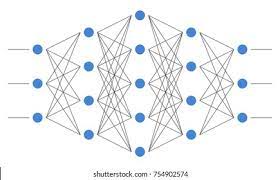
Neural Network Marketing
Neural Network Marketing: An Overview Neural networks are a subset of artificial intelligence that are modeled after the structure and function of the human brain. They consist of interconnected nodes or neurons that can learn and adapt to new information over time. Neural networks have become increasingly important in the field of marketing, as companies…
-

Marketing and Machine Learning:
What is the relationship between marketing and machine learning? Machine learning is a subset of artificial intelligence that involves training algorithms to automatically identify patterns in data and make predictions or decisions based on those patterns. In recent years, machine learning has become an increasingly important tool in the field of marketing, as companies look…
-
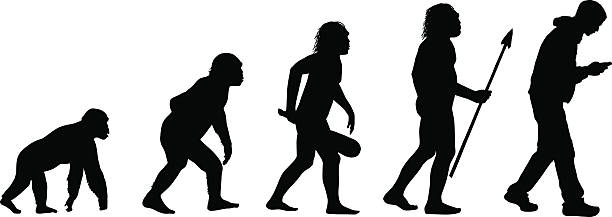
The Evolution of the Web.
The World Wide Web, commonly known as the web, has become an integral part of modern society. It has revolutionized the way we communicate, work, and access information. However, the web we know today has evolved significantly since its inception in 1989. This article provides an overview of the evolution of the web, from its…
-
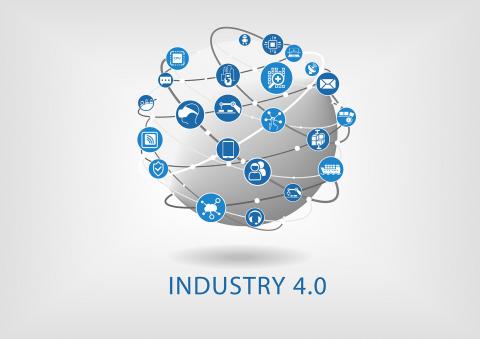
Marketing and Industry 4.0
Industry 4.0 is a term used to describe the current trend of automation and data exchange in manufacturing technologies. The concept is based on the use of digital technology and the Internet of Things (IoT) to create smart factories that can operate with a high level of automation and efficiency. In this article, we will…
-

Marketing and ChatGPT
How can ChatGPT be used for marketing? ChatGPT has immense potential for marketing due to its ability to engage in natural language conversations with customers. Here are some ways in which businesses can use ChatGPT for marketing: These are just some of the ways in which ChatGPT can be used for marketing. However, to fully…
-

Marketing and predictive analytics.
What are predictive analytics? Predictive analytics is a set of statistical techniques and machine learning algorithms used to predict future outcomes based on historical data. It is used in various fields such as marketing, finance, healthcare, and manufacturing to forecast customer behaviour, identify potential risks, and optimize business processes. In this article, we will explore…
-
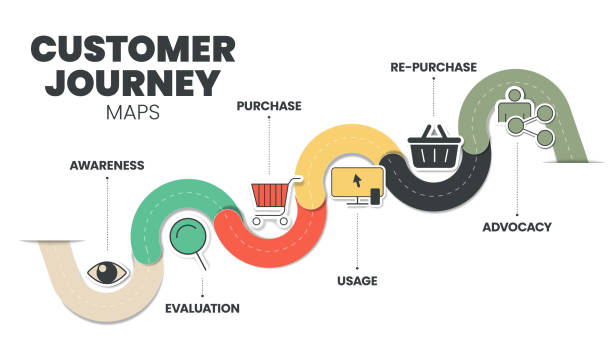
Customer Journey Map
What is a customer journey map? A customer journey map (CJM) is a visual representation of the different stages and touchpoints a customer goes through while interacting with a business or brand. It provides a comprehensive understanding of the customer’s experience, highlighting their needs, motivations, pain points, and overall satisfaction with the brand. CJMs are…
-
Market-driven Organisational Change
Market-led organizational change refers to the process of reorienting a company’s activities and strategies to meet the needs and demands of its customers and the wider market. The concept of market-led change has gained prominence in recent years as companies have recognized the importance of putting the customer at the center of their operations. This…
-

Mobile Marketing
What is mobile marketing? Mobile marketing refers to the practice of reaching and engaging customers and potential customers through mobile devices such as smartphones, tablets, and wearable technology. This type of marketing involves creating and delivering targeted messages and advertisements that are optimized for the smaller screens and shorter attention spans of mobile users. Mobile…
-

Marketing and AI (Artificial Intelligence)
Marketing and AI (Artificial Intelligence) are two rapidly growing fields that are intersecting in the modern business landscape. AI is being used to automate and streamline many of the marketing processes that were once manual, giving organizations new insights and abilities to better target and engage with customers. Marketing and AI can be used together…
-
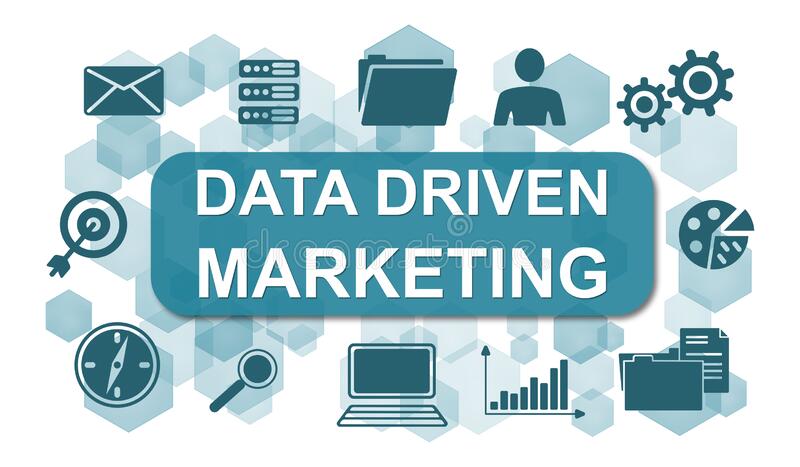
Data-driven Marketing
What is data-driven marketing? Data-driven marketing is the practice of using data to inform marketing strategies and tactics. By collecting and analyzing data on customer behavior, preferences, and demographics, businesses can create targeted and personalized marketing messages that are more likely to resonate with their desired audience. In this article, we will explore the key…
-

Mobile App Analytics for Marketing
What are mobile marketing app analytics for marketing? Mobile app analytics for marketing is the process of measuring, analyzing, and interpreting data collected from mobile applications to improve marketing strategies. With the increasing popularity of mobile apps, businesses are now investing heavily in mobile app analytics to better understand user behavior and engagement. In this…
-

Mobile Marketing Analytics
What are mobile marketing analytics? Mobile marketing analytics is a process of gathering data and insights from mobile marketing campaigns and mobile applications. This data is then analyzed to improve marketing campaigns, optimize user experience, and drive business growth. Mobile marketing analytics helps organizations to understand user behavior, preferences, and needs, which can help them…
-

Marketing Geoanalytics
What are marketing geoanalytics? Geoanalytics is the process of analyzing and visualizing spatial data to extract insights and gain a better understanding of the relationships between location, demographic, and behavior. By using this approach, companies can leverage their data to make more informed decisions in their marketing efforts. In this article, we will explore the…
-

Virtual Commerce
What is virtual commerce (v-commerce)? Virtual commerce, or v-commerce, is the buying and selling of goods and services in virtual environments, such as online games, social media platforms, and virtual reality experiences. With the rise of digital technologies and the growing popularity of virtual worlds, v-commerce has become an increasingly important aspect of modern retail.…
-

What are marketing analytics?
Marketing analytics is the process of collecting, analyzing, and interpreting data related to marketing activities to make better decisions and improve business performance. Marketing analytics helps organizations to better understand their customers, their preferences, and their behaviors, as well as the effectiveness of their marketing campaigns and strategies. Marketing analytics relies on a wide range…
-

Metaverse Marketing
Metaverse marketing refers to the promotion of products and services within virtual reality environments, known as metaverses. The term “metaverse” was coined by science fiction author Neal Stephenson in his 1992 novel “Snow Crash,” and it refers to a virtual world that is shared by millions of people and that can be accessed through a…
-
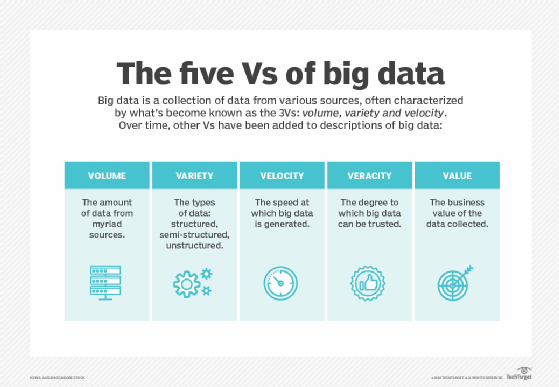
5Vs of Big Data in Marketing
Big data has revolutionized the way marketers approach their work, providing access to a wealth of information about consumer behavior, preferences, and attitudes. The five Vs of big data – volume, variety, velocity, veracity, and value – are particularly relevant to marketing, as they highlight the challenges and opportunities presented by the vast amount of…
-

Disney SWOT Analysis
Disney is a multinational mass media corporation known for its entertainment and media products. The company has a diversified portfolio that includes television networks, movie studios, theme parks, resorts, and consumer products. A SWOT analysis can help identify the internal strengths and weaknesses of the company, as well as the external opportunities and threats it…
-

Uber SWOT Analysis
Uber is a multinational transportation network company that offers ride-sharing and food delivery services in over 900 metropolitan areas across the world. Since its inception in 2009, Uber has revolutionized the transportation industry by providing an innovative and convenient service to customers. However, like any other company, Uber faces various internal and external factors that…
-
Customer Relationship Management (CRM) and Big Data.
Customer Relationship Management (CRM) is a business strategy aimed at building and maintaining long-term relationships with customers through effective management of customer interactions, data, and feedback. Big data, on the other hand, refers to the large volumes of structured and unstructured data generated from various sources. The integration of big data and CRM can provide…
-
Transformative Marketing
What is transformative marketing? Transformative marketing is a concept that refers to the way in which marketing practices can change over time to adapt to new technologies and consumer demands. According to V. Kumar (2018), transformative marketing is a shift from traditional marketing practices to a more customer-centric and technology-driven approach that aims to create…
-
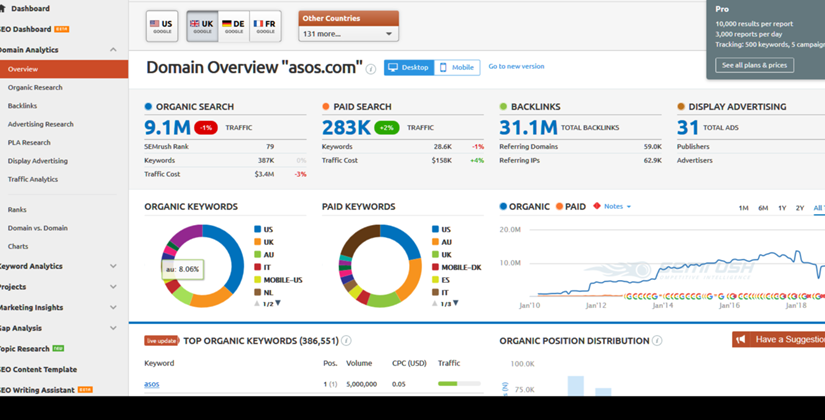
Digital Marketing Competitor Analysis
How can a marketing competitor audit be more ‘digital?’ In this lesson we’re going to look at digital marketing and a digital marketing competitor analysis. One of the problems that you may encounter when learning about marketing is that the competitor analysis is often a traditional or transactional competitor analysis that would have been done…
-
Privacy Policy
Privacy Policy Last updated: December 26, 2021 This Privacy Policy describes Our policies and procedures on the collection, use and disclosure of Your information when You use the Service and tells You about Your privacy rights and how the law protects You. We use Your Personal data to provide and improve the Service. By using…
-
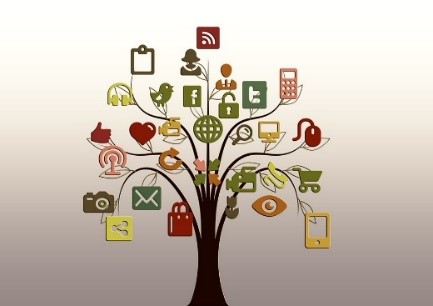
Why do you need a website?
The first place that any of your potential customers or clients will look for you is on the Internet. So obviously your website needs to be a digital representation of everything that’s great about your small business. Not having a website isn’t a choice. So where do you begin? It is all down to you,…
-

Simple viral marketing
Viral marketing is an often discussed term, but how will it help you to market your small business? Viral marketing is the equivalent of online word-of-mouth. Viral marketing, aka Buzz marketing, uses all of the digital marketing media to disseminate a message which is passed along from person to person; it is viral because it…
-
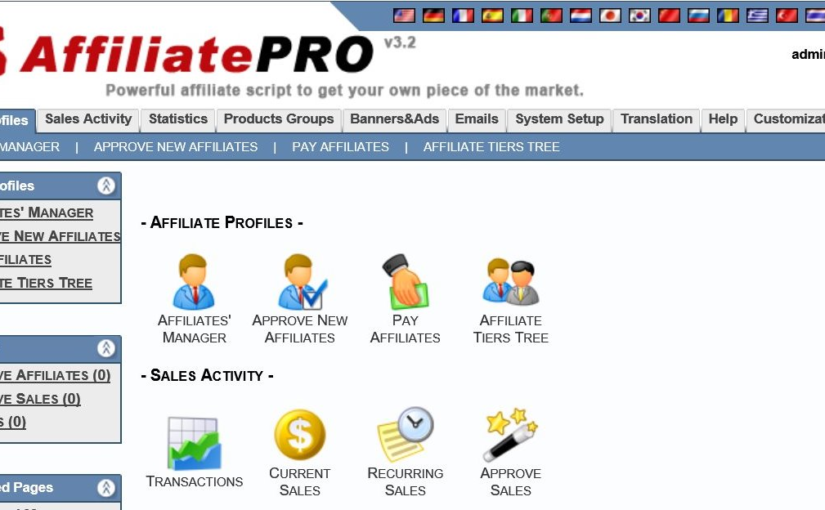
Your own affiliate program
Why not consider your own affiliate programme? You would be the merchant (as Amazon was in the example) Benefits of affiliate marketing, as a merchant. everything is tracked and so each stage can be checked by the merchant and the affiliate; this means that both parties are accountable. You pay for performance. If there is…
-
Google Small Business
Google Small Business is a YouTube channel which helps small businesses to succeed on the Internet by connecting them with each other as a community, and with Google’s own experts. It a really interesting place to find some easy to use advice about how to succeed using the Internet. Simply search for it on YouTube.…
-
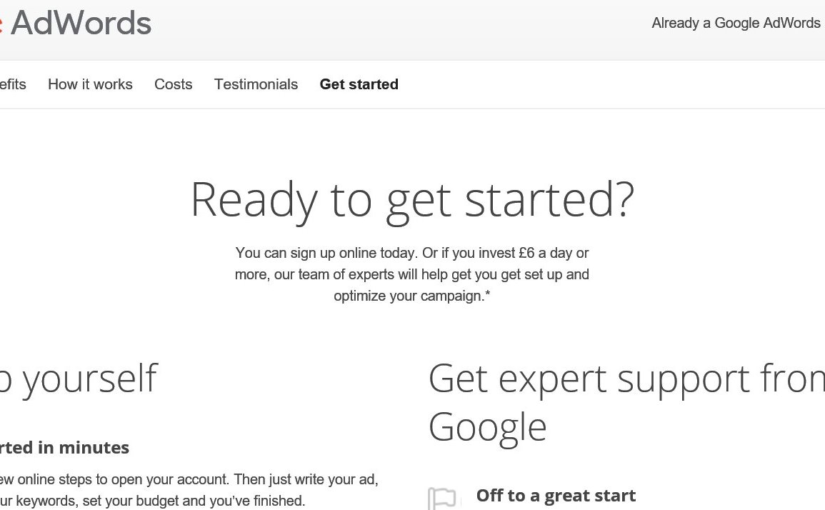
AdWords – getting started
Signing up for Google AdWords is very straightforward. You simply start an account, and if you get stuck you can telephone a Google advisor to help you. You can tailor your advertising to suit specific customers, and you can change your advertising campaign throughout the year. You are able to measure the impact of your…
-

Pay-Per-Click Advertising (PPC)
The majority of online advertising today is conducted using a Pay-Per-Click advertising (PPC). If you look at the top of a Google search, you will see a series of the adverts before the actual search engine results appear. Here’s an example of a search for ‘cheap+pianos.’ Google AdWords These are paid-for adverts using a product…
-

Measuring the success of your campaign
Most of us do not have the time to measure success. However, evaluating how successful your campaigns and promotions have been, is an important way to learn. Use this learning to make your campaign and promotions more effective and profitable in the future. Here are a few tips on ways to gather information on the…
-

Advertising in cinemas and theatres
Cinemas and movie theatres Your local cinema or movie theatre may be the place where your local customers congregate. Similar rules apply, as with radio and newspapers above, so common sense says you need to target those movies which your customers want to see. If you have a restaurant you may decide to advertise early…
-

Radio Advertising
You may be lucky enough to have a local independent radio station which is listened to by your target customers. Obviously, the benefits of any broadcast radio are that the medium is largely limited to sound and therefore is often best suited to communicating pure fact, for example when you are launching a new product…
-

Marketing in the press
The press (national or local) – newspapers and magazines The national and local press are a more mature form of advertising, which is still very popular with entrepreneurs, start-ups and small companies. The benefit is that publishers will recognise the type of business that you have, and recommended packages of advertising that will deliver a…
-

Outdoor marketing
Outdoor – posters, billboards and transportation Outdoor advertising, which is also known as Out-Of-Home advertising (OOH), is all advertising that your customers are exposed to when outdoors! It is surprising how much advertising you can be exposed to whilst you are on the go. You will see advertising whilst walking, or using any form of…
-

Small business advertising plan
Your outline advertising plan in 7 steps. Who is the potential TARGET AUDIENCE of the advert? These are your potential customers. WHAT do I wish to communicate to this target audience? Tell them about your product or service, its benefits, attributes and features. Tell them about your brand! Why is this message so IMPORTANT to…
-

Marketing samples
Samples for marketing. There is nothing like actually trying a product or service out for yourself; therefore, if you experience it you know what you are buying and it may make it simpler for you to achieve your sale. You could give away a free sample, or you might decide to charge a small amount…
-

Promoting and advertising your start-up
There are many tools and techniques that will be useful to you when communicating with the outside world. Think about these tools as another type of mix, let us call it the promotions mix! Again, you will balance and blend these approaches to suit your business’ needs best. Ask yourself ‘why?’ are you trying to…
-

Marketing for Entrepreneurs, Start-Ups and Small Businesses, by Tim Friesner.
Marketing for Entrepreneurs, Start-Ups and Small Businesses, by Tim Friesner. People market ideas, products and services for all sorts of reasons; you might want to make the world better for everyone, you might desire recognition for yourself, you might not like working for other people, or you might have found yourself unemployed for a whole…
-

How much digital marketing is enough?
With your digital strategy you need to decide how much of your valuable time & resources you are willing to dedicate. In order to do this, there are a series of questions which you need to ask yourself; spend some time thinking about this because the digital world is full of smoke and mirrors.
-
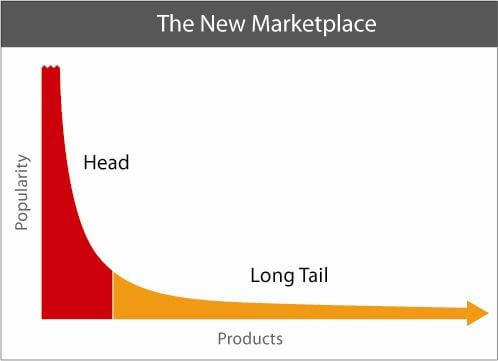
Long tail concept
Zipf’s law states that if a collection of items is ranked by popularity the second item will have around half the popularity of the first one and the third item will have about a third of the of the popularity of the first one and so on.
-
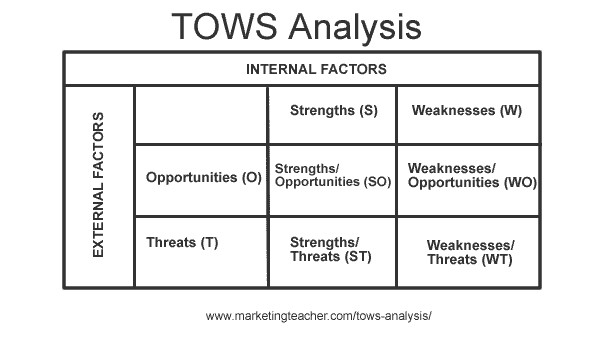
TOWS Analysis
What is TOWS Analysis? TOWS analysis is a tool which is used to generate, compare and select strategies. Strictly speaking it is not the same as SWOT analysis, and it is certainly not a SWOT analysis which focuses on threats and opportunities. This is a popular misconception. TOWS may have similar roots. TOWS is a…
-

What is Marketing? Marketing definitions.
There are many definitions of marketing. The better definitions are focused upon customer orientation and satisfaction of customer needs.
-

SMART Objectives
SMART objectives are simple and quick to learn. The objective is the starting point of the marketing plan. Once environmental analyses (such as SWOT, Five Forces Analysis, and PEST) and marketing audit have been conducted, their results will inform objectives. SMART objectives should seek to answer the question ‘Where do we want to go?’.
-

Marketing mix
What is the marketing mix? Overview The marketing mix is a fundamental concept in marketing that encompasses a set of tactical tools and strategies used by businesses to achieve their marketing objectives. The concept was introduced by Neil Borden in 1964 and popularized by E. Jerome McCarthy in the 1960s. The marketing mix comprises four…
-

What is a customer?
A customer is a person or company who purchases goods and services.
-

Three Levels of a Product
In order to actively explore the nature of a product further, lets consider it as three different products – the CORE product, the ACTUAL product, and finally the AUGMENTED product. These are known as the ‘Three Levels of a Product.’ So what is the difference between the three products, or more precisely ‘levels?’
-

Target
Targeting is the second stage of the SEGMENT target POSITION process. After the market has been separated into its segments, the marketer will select a segment or series of segments and ‘target’ it/them.
-
Seven Cs
There are seven design elements – 7Cs – that should be considered when creating a website intended for commerce and sales. Customers shop online for several reasons; the most important are the convenience, cost, large selection and the allure of control over their purchases. Customers can easily shop around from anywhere they have an Internet…
-
Return On Investment (ROI)
Return On Investment (ROI) Lesson Exercise Answer No company can hope to remain viable or even grow, without closely monitoring the effectiveness of its advertising. In the current economy no corner of a company’s expenses is going without scrutiny, especially marketing and promotion costs. The benefits of return on investment data works both ways, it…
-
Public Relations (PR)
Public Relations (PR) is a single, broad concept. It is broad since it contains so many elements, many of which will be outlined in this lesson. Public Relations (PR) are any purposeful communications between an organisation and its publics that aim to generate goodwill. Publics, put simply, are its stakeholders. PR is proactive and future…
-

Promotion
Another one of the 4P’s is ‘promotion’. This includes all of the tools available to the marketer for ‘marketing communication’. As with Neil H.Borden’s marketing mix, marketing communications has its own ‘promotions mix.’
-
Public Relations (PR) Two
Tis is part two of Marketing Teacher’s public relations lesson.
-
Public Relations (PR) Three
This is part three of Marketing Teacher’s lesson on public relations.
-
Promoção
Este inclui todas as ferramentas disponíveis para o comerciante para a ‘comunicação de marketing’. Como na mistura de marketing de Neil H. Borden, comunicações de marketing têm suas próprias ‘mistura de promoções’. Pense nisso como uma mistura de bolo, os ingredientes básicos são sempre os mesmos. Apesar disso, se você varia a quantidade de um…
-
Profit and Loss Statement
The Profit and Loss statement is one of the main business financial statements. Among the various financial statements, a Profit and Loss statement most closely resembles what is referred to as
-

Pricing Strategies
There are many ways to price a product. Let’s have a look at some of them and try to understand the best policy/strategy in various situations.
-
Process – Marketing Mix
Process is another element of the extended marketing mix, or 7P’s.There are a number of perceptions of the concept of process within the business and marketing literature.
-
Product Life Cycle (PLC)
The Product Life Cycle (PLC) is based upon the biological life cycle. For example, a seed is planted (introduction); it begins to sprout (growth).
-
O Ciclo de Vida do Produto (CVP)
O Ciclo de Vida do Produto (CVP) é baseado no ciclo de vida biológico. Por exemplo: uma semente é plantada (introdução); ela começa a brotar (crescimento); dela nasce folhas e se enraíza ao se tornar adulta (maturidade); depois de um longo período como um adulto a planta começa a murchar e morre (declínio).
-

Marketing Place
Place as part of the marketing mix is considered in this FREE lesson from Marketing Teacher.
-
Physical Evidence – Marketing Mix
Physical evidence is the material part of a service. Strictly speaking there are no physical attributes to a service, so a consumer tends to rely on material cues.
-
Philosophy and Theory of Marketing
The academic discipline of marketing has core schools of thought, where marketing is seen as either a philosophy or as a function. Where marketing is considered a philosophy, the marketing concept is embedded in management thought. With the alternative view, where marketing is a function within a business, marketing is seen as a department, in…
-

PESTEL
PESTEL Model This lesson is about PESTEL analysis. As we know from our lesson on the marketing environment the wider macroenvironment impacts upon how marketing managers make decisions. During this lesson we’re going to look at how we audit and evaluate our external business environment. There are a number of acronyms which are popular for…
-

PEST Analysis
PEST analysis is very important that an organization considers its environment before beginning the marketing process. In fact, environmental analysis should be continuous and feed all aspects of planning.
-
Análise PEST
Análise PEST É muito importante que uma empresa considere fatores ambientais antes de iniciar o processo de marketing. Em fato, análises ambientais devem ser contínuas e preencher todos os aspectos do planejamento.
-
People – Marketing Mix
People are the most important element of any service or experience. Services tend to be produced and consumed at the same moment, and aspects of the customer experience are altered to meet the ‘individual needs’ of the person consuming it. Most of us can think of a situation where the personal service offered by individuals…
-
O que é Marketing?
A definição do CIM (o mesmo que a definição do conceito de marketing de Barwell) não procura identificar as necessidades do consumidor, mas também em satisfazê-los (curto prazo) e antecipá-los no futuro (longo prazo de retenção).
-
Introduction to Marketing Research
This is Marketing Teacher’s introduction to marketing research. Market research and marketing research are often confused. ‘Market’ research is simply research into a specific market. It is a very narrow concept.
-
Secondary Marketing Research
Here you will find Marketing Teacher’s FREE lesson on secondary marketing research. Market research and marketing research are often confused. ‘Market’ research is simply research into a specific market. It is a very narrow concept.
-
Microenvironment
Microenvironment What is the microenvironment? This lesson covers the microenvironment in greater detail. It considers the interface between a business and its microenvironment. Let’s just review what microenvironment is again based upon the earlier lesson on the marketing environment which contains the topic. Our microenvironment is the totality of people and other connected groups of…
-
Primary Marketing Research
Market research and marketing research are often confused. ‘Market’ research is simply research into a specific market. It is a very narrow concept. ‘Marketing’ research is much broader. It not only includes ‘market’ research, but also areas such as research into new products, or modes of distribution such as via the Internet.
-
Planos de Marketing
Planos de marketing são vitais para o sucesso da campanha de marketing. Eles auxiliam a centrar a mente de companias e times no processo de marketing, por exemplo: o que será atingido e como nós pretendemos a fazer isso. Existem muitos métodos de planos de marketing. Marketing Teacher focalisa em cima estágios chave do plano.…
-
Informal Marketing Plans
Formal and informal approaches to marketing planning were investigated by Lyles (1993). This study found that neither had any relationship with business success. Over 60 studies into SME’s were collated by Shrader et al (1989). Their conclusion was that there are some benefits to informal marketing planning, especially in smaller firms. The owner/manager tends to…
-
Formal Marketing Plans
Formal marketing planning is what is commonly thought of as marketing planning. It tends to be a systematic process that includes a series of stages. Few authors agree on the specifics of the process but it is common to see the marketing plan beginning with analysis, the development of strategy and the implementation of the…
-
Marketing Plans and Consumer Behavior
A business is in a better position to weather an economic downturn when it is buttressed by a good marketing plan. A firms understanding of consumer behavior is enhanced if its marketing plan includes careful consideration of market segmentation, targeting and positioning.
-
Marketing Planning and the Size of the Organization
Marketing planning research has been based on organizations of various sizes. Most studies consider large corporations more specifically large multi-divisional companies (Ames 1968), companies selected from the top 100 US spenders on advertising (Cosse and Swan 1983), and companies with more than a £17 million turnover (Piercy and Thomas 1983). SME’s were investigated by Lancaster…
-
Behavioral Marketing Planning
Human and behavioural inputs are brought to marketing planning by the marketing manager himself or herself. The driver for the illogical approach of Piercy and Giles (1989) lies with the experience of managers. So where informal marketing planning recognized that there are different approaches to marketing planning, away from the structure and linear process of…
-
Marketing Planning and the Marketing Manager
After considering the current management literature in depth, it has become apparent that there are four main categories of marketing planning based upon the relationship between the marketing planning process and the marketing manager. The four types of marketing planning are formal/functional, informal/functional, formal/individual and informal/individual. The literature reviewed dates from the 1960’s to the…
-
Marketing Planning and Performance
Marketing as a discipline is not a precise science. However, the area of marketing planning does have its own theory, the validity of which is open to some criticism. The theory of marketing planning contends that a formalised marketing planning system will help a company to improve its performance (McDonald 1982). In other words a…
-
Marketing Plans
Marketing plans are vital to marketing success. They help to focus the mind of companies and marketing teams on the process of marketing i.e. what is going to be achieved and how we intend to do it. There are many approaches to marketing plans.
-
Marketing Planning (Advanced)
There is no commonly accepted definition or approach to marketing planning. This is because of a number of problems that pepper the marketing planning literature relating to the size of an organisation, the market or sector in which it exists, its culture, and the human beings that work within it.
-
Ambiente de Marketing
O ambiente de marketing envolve e tem impacto sobre a organização. Existem três perspectivas fundamentais a respeito do ambiente e marketing, elas são: o ‘macro-ambiente’, o ‘micro-ambiente’ e o ‘ambiente interno’.
-
Marketing Contexts
The marketing mix and the services marketing mix should be adapted for different organizational and business contexts.
-

Marketing Environment
The marketing environment surrounds and impacts upon the organization. There are three key elements to the marketing environment which are the internal environment, the microenvironment and the macroenvironment.
-

Marketing Concept
Marketing Concept. The marketing concept holds that achieving organisational goals depends on knowing the needs and wants of target markets and delivering the desired satisfaction better than competitors do. Kotler and Armstrong (2010). The marketing concept arrived after a series of other orientations that marketing companies underwent during the 20th Century. Initially there was production…
-

Marketing Audit
The marketing audit is a fundamental part of the marketing planning process. It is conducted not only at the beginning of the process, but also at a series of points during the implementation of the plan. The marketing audit considers both internal and external influences on marketing planning, as well as a review of the…
-
Marketing Budget
Marketing budgets ensure that your marketing plan or campaign is realistically costed. Some pre-budget research into your industry and market, your competitors and your business’s historical marketing metrics helps marketing managers make a more informed calculation. You should cost out all general marketing and marketing communications expenses. You could also work in conjunction with an…
-
Introduction to Marketing Communications
Marketing communications is a subset of the overall subject area known as marketing. Marketing has a marketing mix that is made of price, place, promotion, product (know as the four P’s), that includes people, processes and physical evidence, when marketing services (known as the seven P’s).
-
Marketing and Functions
The marketing function within any organization does not exist in isolation. Therefore it’s important to see how marketing connects with and permeates other functions within the organization.
-
Marketing and Customer Relationships
Marketing and Customer Relationships Marketing today is very much focused upon business relationships, especially in the B2B markets. Historically companies would manufacture products that would be promoted to customers. However as markets have become more competitive, marketing companies seek to attract customer by building strong relationships so that customers are ‘retained’ i.e. you keep hold…
-
Loyalty Ladder
The loyalty ladder is often used by marketing communicators to put forward the proposition that consumers can be moved along a continuum of loyalty using a number of integrated marketing communications techniques (it is also referred to as a ‘Branding Ladder.’).
-
Strategic Internal Marketing
Internal Marketing is a vital communication and change management tool. Learn how to construct an internal marketing plan.
-
Internal Marketing
Internal Marketing Internal marketing is inward facing marketing. Internal marketing is used by marketers to motivate all functions to satisfy customers. With internal marketing the marketer is really extending and developing the foundations of marketing such as the marketing concept, the exchange process and customer satisfaction to internal customers. Internal customers would be anybody involved…
-
Four Banding Alternatives
A marcoms tool that a marketer can employ for branding decision-making is the Four Banding Alternatives (Tauber 1981). Four Branding Alternatives is a strategic marketing communications technique. It is a fun and creative approach that can add value to any class that likes to discuss brands and how they could be innovatively developed.
-
External Influences – Social Environment and Social Class
Reference groups have an influence on purchasing behavior, but the level of influence will depend on where the product will be consumed—in public or in private—and whether the product is a want or a need.
-
External influences – Introduction
What a consumer eats, wears, and believes are all learned and influenced by the culture they live in, their family, childhood and social environment. All of these are external factors that affect purchases.
-
Family Life Cycle
Family life cycle is defined as what type of family the target market consumer is in. DINKS are “double income no kids” and SINKS are “single income no kids”. Marketers love to target the DINKS and SINKS because they have lots of discretionary income and no children to spend it on, so they spend their…
-
External Influences – Consumer Culture
Culture includes knowledge, belief, art, law, morals, customs, and any other capabilities and habits acquired by humans as members of society. How does culture affect consumer behavior? Whatever a person consumes will determine their level of acceptance in their society. If someone does not act consistently with cultural expectations, they risk not being accepted in…
-
External Influences – Family Influences (Birth Order)
Where a child places in the birth order can have an effect on how they see themselves, and therefore affects their consumer behavior. The middle child often seems to have the most negative impressions of his lot in life. Younger children always want to be able to do the things older siblings are allowed to…
-
Marketing Exchange Process
Marketing as an Exchange Process At the beginning of any marketing course or programme it is important to appreciate how exchange processes work. An exchange process is simply when an individual or an organisation decides to satisfy a need or want by offering some money or goods or services in exchange. It’s that simple, and…
-
Email Marketing Providers
Email Marketing Providers There are plenty of e-mail marketing companies out there. One thing is sure that when your business grows you need to make your e-mail marketing solution as automatic as possible, so don’t think that you can manually enter details on your tablet or PC. E-mail marketing providers give you plenty of interactive…
-
Email marketing campaigns
Email marketing campaigns Let’s take a look at the best way for you to design your e-mail marketing campaign. As with most other types of marketing, e-mail marketing campaigns work best if they follow a marketing planning format. Based on marketing principles ask yourself who exactly are you targeting your e-mail at? Who are your…
-
Direct Marketing
Direct marketing is a channel free approach to distribution and/or marketing communications. So a company may have a strategy of dealing with its customers ‘directly,’ for example banks (such as CityBank) or computer manufacturers (such as Dell). There are no channel intermediaries i.e. distributors, retailers or wholesalers.
-
Direct and indirect costs
Direct and Indirect Costs Lesson Exercise Answer The allocation and identification of direct and indirect costs contributes to more accurate profit calculations. Not only is the clarification of costs important to business owners, it may be of particular interest to some prime contractors who may actually impose a specific accounting methodology in order to meet…
-
What is Consumer Behavior?
How many times throughout the day do people make product decisions? If you stop to think about it, many product decisions are made every day, some without much thought. What should I wear? What should I eat? What am I going to do today? Many product decisions are answered routinely every day and they help…
-

Decision Making Unit
The decision Making Unit (DMU) is a collection or team of individuals who participate in a buyer decision process. Generally DMU relates to business or organisational buying decisions rather than to those of a family for example.
-
Customer Satisfaction
Customer satisfaction So the purpose of marketing centres very much upon creation of value and a long-term customer relationship. Customer satisfaction is a central concept to this proposal. A marketing company aims to set a level of expectation at which customers are satisfied that value is delivered through an exchange process. Be careful not to…
-
Customer Relationship
The Customer Relationship Think about some of the relationships that are important to you. You have parents and friends, and you have workmates and acquaintances. To a greater or lesser extent you have a relationship with all of these people. Say you have a number of roles, such as student, professional, son or daughter, teacher,…
-
Customer Life Cycle (CLC) and CRM
The Customer Life Cycle (CLC) has obvious similarities with the Product Life Cycle (PLC). However, CLC focuses upon the creation of and delivery of lifetime value to the customer i.e. looks at the products of services that customers NEED throughout their lives.
-
Customer database
Customer database This session will consider how to create a customer database which can be used to store information which can be accessed by members of your organisation. If we gather information about specific traits or attributes of our customers, then we can look similarities and satisfy the needs of large groups of customers. Such…
-
Customer Relationship Management (CRM)
CRM is a term that is often referred to in marketing. However, there is no complete agreement upon a single definition. This is because CRM can be considered from a number of perspectives.
-
CRM and Information Technology
As we have discussed, CRM is more than just software. For the purposes of this introduction – Information Technology (IT) and CRM have three key elements, namely Customer Touch Points, Applications, and Data Stores. This section is based loosely upon Raisch (2001) The eMarketplace.
-
Business Strategy and CRM
We now consider the Business Strategy Perspective on CRM. Here, we propose a model, which is a hybrid, and typical of many of the models and diagrams of CRM that you will find on The Internet and in popular books on the topic of eMarketing/eCommerce.
-
Core Competences
A core competence is the result of a specific unique set of skills or production techniques that deliver value to the customer. Such competences give an organization access to a wide variety of markets. Hamel and Prahalad (1990) refer to a number of organizations and their products to support their concept, including NEC, Honda and…
-
Marketing Controls
There is no planning without control. If an objective states where you want to be and the plan sets out a road map to your destination, then control tells you if you are on the right route or if you have arrived at your destination.
-
Contribution Analysis
Contribution Analysis Lesson Exercise Answer Occasionally a company is confronted with unplanned events which call for the use of decision-making tools beyond those found in the basic accounting methods. Price – Variable Costs Per Unit = Contribution Margin Per Unit On an individual special order project a company’s product contribution to profit may also be…
-
Conducting Marketing Research
Conducting Market Research How the professionals do marketing research The professionals use a market research process that generally incorporates five steps. 1. Problem definition This step involves identifying an information gap and defining a research problem as specifically as possible. 3. Conducting Fieldwork This step involves implementing the action plan. ‘Fieldwork’ is a generic term…
-
Consumer Behavior 8 Types of Online Shoppers
Consumer Behavior Situational influences and the 8 Traits of Online Shoppers i. Adventurous Explorers (30% of online spending) are a small segment that presents a large opportunity. They require little special attention by Internet vendors because they believe online shopping is fun. They are likely the opinion leaders for all things online. Retailers should nurture…
-
Cash Flow Statement
The main purpose of a Cash Flow Statement (CFS) is to help the business owner plan and control the flow of income in order to meet scheduled financial obligations. The information illustrated in the Cash Flow Statement also aids lenders and investors in determining a company’s financial health.
-
Buyer Decision Process
Buyer Decision Process The stages of the Buyer Decision Process The buyer decision process represents a number of stages that the purchaser will go through before actually making the final purchase decision. The consumer buyer decision process and the business/organisational buyer decision process are similar to each other. Obviously core to this process is the…
-
Collecting customer information
Collecting customer information Collecting Information about customer needs. So we recognise that customers and consumers have needs and wants. We are now going to look at how we gather information about customer needs and want, since by satisfying these needs and wants is how we make profit. There are internal and external sources of information,…
-
Business to Business Marketing
Business-to-Business What is Business-to-Business Marketing? Business-to-Business (B2B) marketing involves the exchanges of goods and services that businesses purchase for purposes other than general consumption. Of course in consumer markets the focus of the marketer is upon the customer as a purchaser who is the consumer, or who will give the product or service to the…
-
Building and Developing Relationships
Building and developing relationships Example – Dell- How networking skills lead to better co-ordination. Your staff develops networking skills in the supply chain. From the perspective of the previous lesson, we are concerned very much with internal and external customers, our customer relationships, loyalty and retention. So if we reconsider each term in relation to…
-
Business Environment
Business Environment What is the business environment? The business environment is made up from the microenvironment and the macroenvironment. Our previous lessons on the marketing environment summarises both topics. The business environment will now be considered in a more practical manner. There are forces in the business environment that will impact your business, which are…
-
Brainstorming
Brainstorming is simply a means of getting a large number of ideas from a group of people in a short time. Brainstorming is great for marketers! Marketers can generate new creative ideas for products, services, solutions or concepts. Not only is brainstorming useful for creative thinking, but is can also be used for marketing problem…
-
Introduction to Brands
Branding is a strategy that is used by marketers. Branding as Strategy to differentiate products and companies, and to build economic value for both the consumer and the brand owner. Brand occupies space in the perception of the consumer, and is what results from the totality of what the consumer takes into consideration before making…
-
Balance Sheet
The Balance Sheet Lesson Exercise Answer The Balance Sheet holds information of great interest to bankers and investors alike. The information represented on a Balance Sheet is very revealing to the keen eye, because it can forecast a company’s ability to pay its bills and discloses how much money has been invested. Shareholders Equity is…
-
Annual Reports for Marketers
An Annual Report is a statement prepared by companies that are traded publicly. The development of an Annual Report provides inherent value in the process of reviewing major financial and operational achievements that occurred during the past 12 months.
-
Annual Accounts
Annual Accounts Lesson Exercise Answer Although the standard components of a basic annual report such as balance sheet, profit and loss statements and cash flow statements provide key financial information of interest to shareholders and others, there are occasions when more thorough information is desired. Some larger companys have subsidiaries, participate in joint ventures and…
-
Advertising
Advertising is an important element of the marketing communications mix. Put simply, advertising directs a message at large numbers of people with a single communication. It is a mass medium.
-
Advertising Agencies
An advertising agency handles part or all marketing communications activities on behalf of a client organisation. The agencies themselves tend to vary in size from small, perhaps a handful of people, to vast – where many thousands of employees make up the company. A commission is generally taken by the agency which tends to be…
-
Adoption Process
The Adoption Process. The Adoption Process (also known as the Diffusion of Innovation) is more than forty years old. It was first described by Bourne (1959), so it has stood the test of time and remained an important marketing tool ever since. It describes the behaviour of consumers as they purchase new products and services.…
-
Activity-Based Costing (ABC)
A manufacturing company is uniquely positioned to benefit from activity-based costing. Activity-based Costing is a costing model that aids a company in determining the costs of certain activities involved in producing a product/service and distributing that product/service to a customer.
-
Respostas – Análise SWOT
Here is the answer to our SWOT exercise. A análise SWOT é uma ferramenta utilizada para examinar uma empresa e os fatores que afetam seu funcionamento. Este é o primeiro estágio de planejamento, o que ajuda o empresário focar nos pontos principais da empresa. A sigla SWOT representa a primeira letra das palavras, em ingles:…
-
Respostas – Análise PEST
Answer: Análise PEST É muito importante que uma empresa considere fatores ambientais antes de iniciar o processo de marketing. Em fato, análises ambientais devem ser contínuas e preencher todos os aspectos do planejamento.
-
Respostas – Introdução para Pesquisa de Marketing
Answer: Pesquisa de mercado e pesquisa de marketing muitas vezes podem ser confusas. Pesquisa de ‘mercado’ é simplesmente uma pesquisa em um mercado específico; um conceito muito simples e limitado. Pesquisa de ‘marketing’, no entanto, vai muito mais além.
-
Marketing Teacher Lesson Store Portuguese
-

Customer Relationships (Maintaining)
Customer Relationship Management (CRM) tutorial.
-
SWOT Analysis – POWER SWOT
SWOT analysis is a marketing audit that considers an organization’s strengths, weakness, opportunities and threats. Our introductory lesson gives you the basics of how to compete your SWOT as you begin to learn about marketing tools. As you learn more about SWOT analysis, you will become aware of a number of potential limitations with this…
-
Distribuição, canal ou intermediário
Outro elemento da Mistura de Marketing de Neil H.Borden é Praça (Ponto de Venda). Ele também é conhecido como canal, distribuição ou intermediário. Este é um mecanismo o qual produtos e serviços são movidos do produtor/ comerciante ao usuário ou consumidor.
-
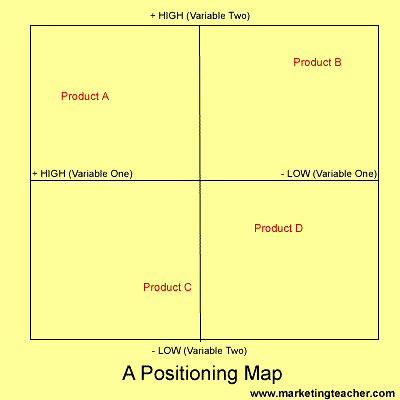
Positioning in marketing
Products or services are ‘mapped’ together on a ‘positioning map’. This allows them to be compared and contrasted in relation to each other. This is the main strength of this tool. Marketers decide upon a competitive position which enables them to distinguish their own products from the offerings of their competition (hence the term ‘positioning…
-
Posicionamento
A Terceira e última parte do processo de SEGUIMENTO – META/ ALVO(TARGET) – POSIÇÃO (STP) é ‘posicionamento’. Posicionamento é sem dúvida um das ferramentas mais simples e úteis para comerciantes. Depois de seguimentar um mercado e de decidir seu consumidor-alvo, é necessário posicionar o produto dentro do mercado.
-
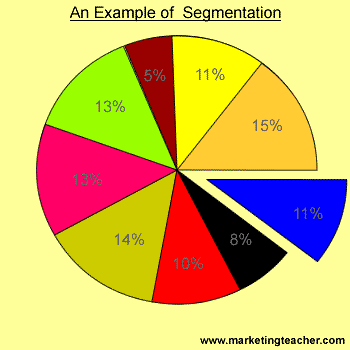
Segmentation
Segmentation is essentially the identification of subsets of buyers within a market who share similar needs and who demonstrate similar buyer behavior.
-
Preço
Existem várias maneiras de decidir o preço de um produto. Vamos olhar algumas destas maneiras e tentar entender a melhor forma/estratégia em diferentes situações.








